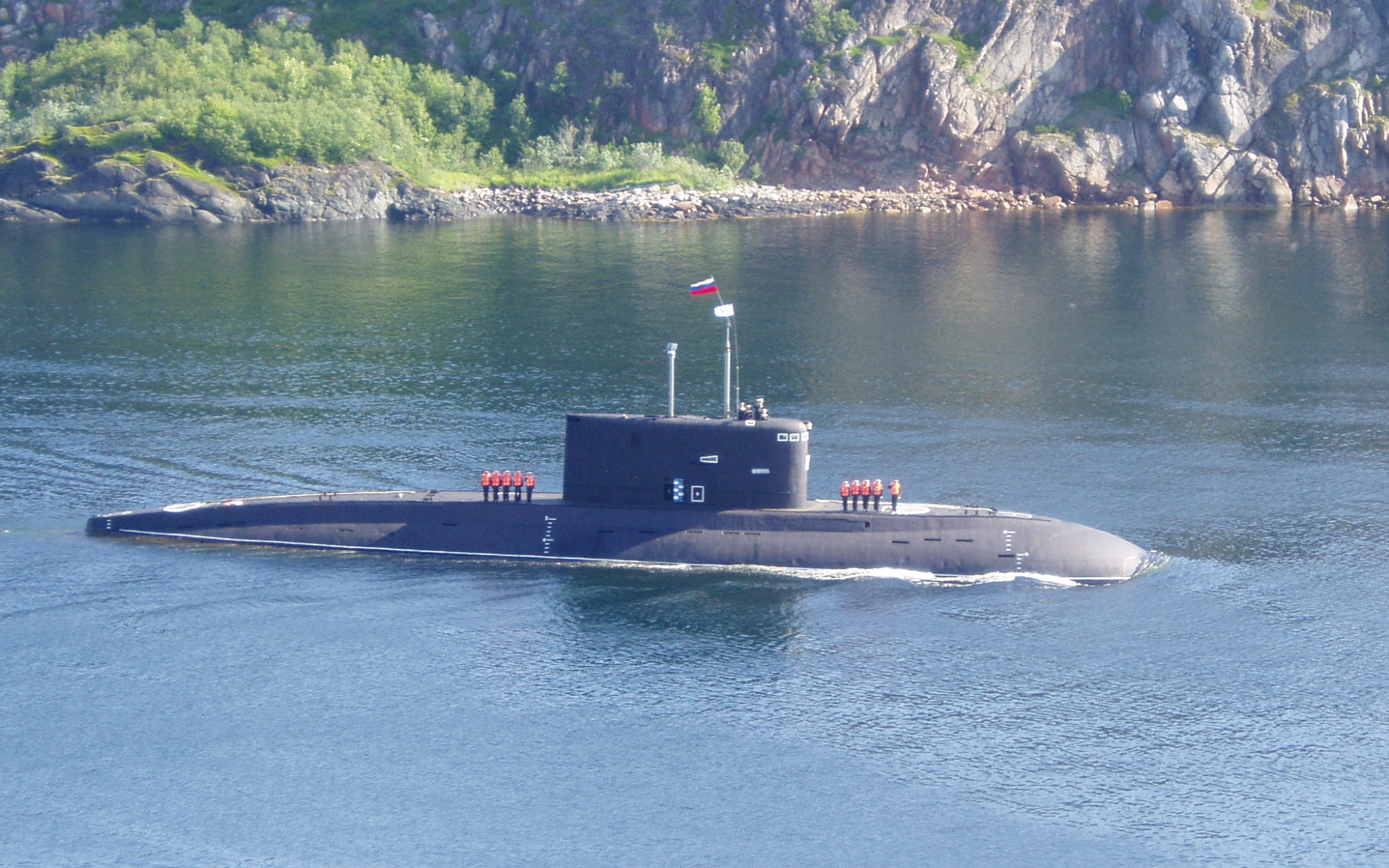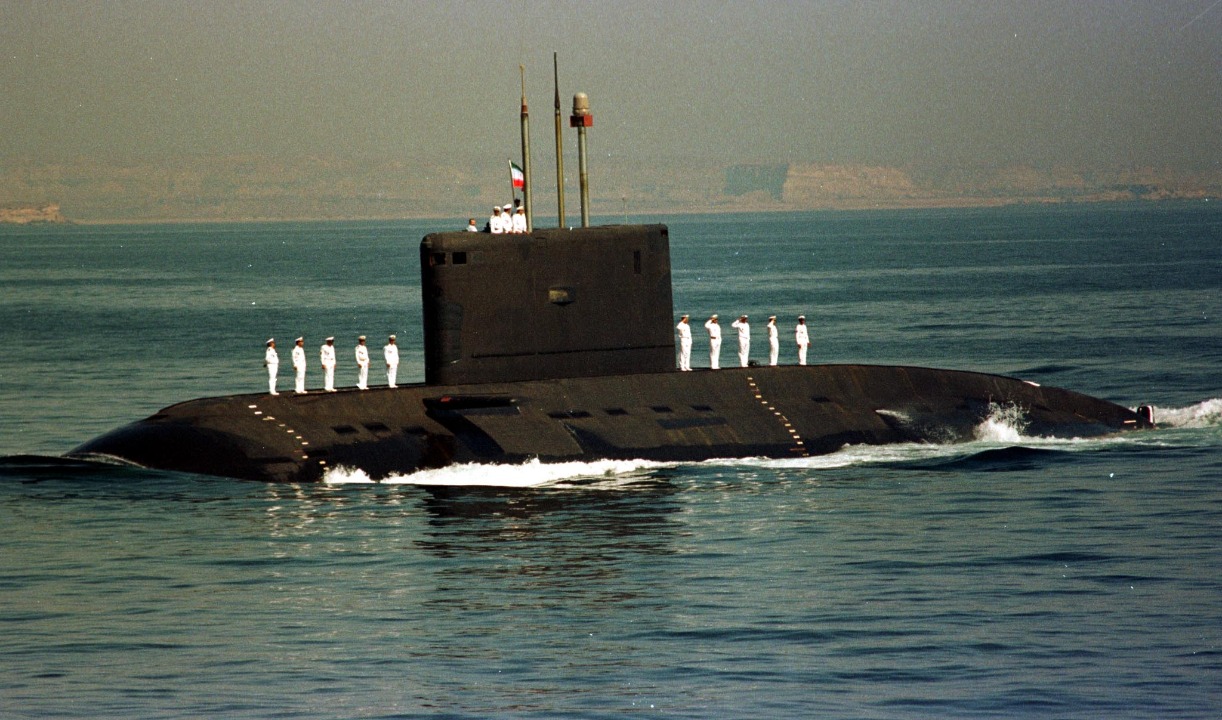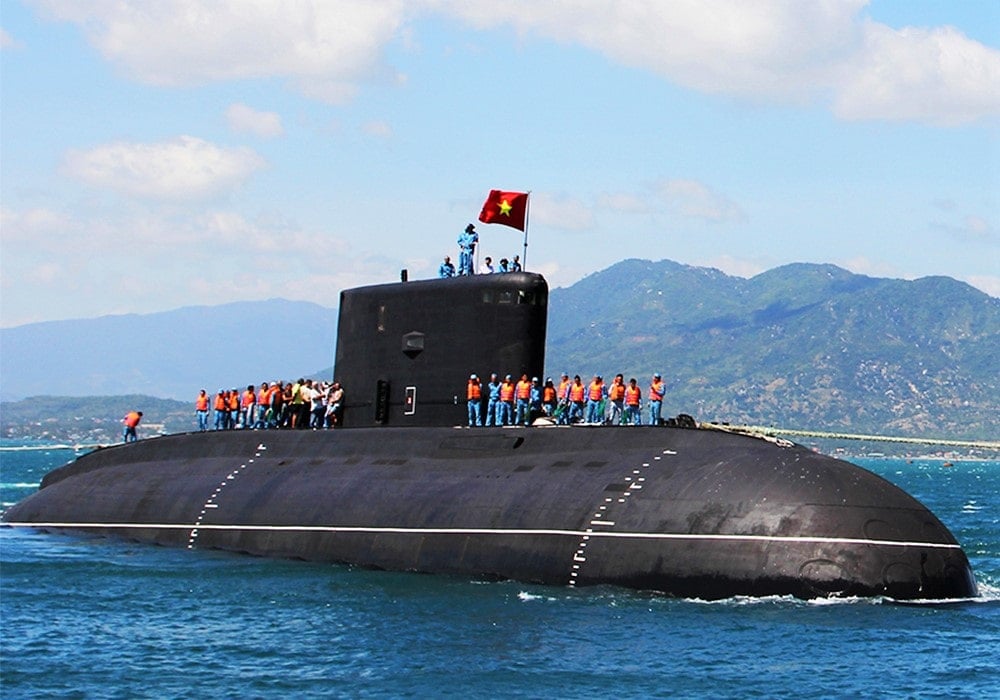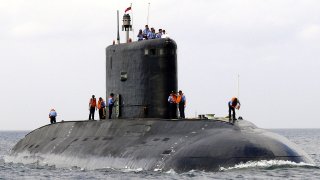Russia's Kilo-Class 'Black Hole' Submarine: A Nightmare for the U.S. Navy?
The diesel-electric Kilo-Class, with its 45-day maximum at-sea endurance and 400 nautical mile submerged range, is a relic in an era of nuclear submarines but persists as a part of Russia's current capabilities.
Summary: Russia's invasion of Ukraine has reignited global scrutiny of its military, particularly in the context of the ongoing land and air war. Among Russia's array of defense platforms, the Kilo-class submarine, a holdover from the Soviet era, has drawn attention for its role despite being considered outdated.

-The diesel-electric Kilo-Class, with its 45-day maximum at-sea endurance and 400 nautical mile submerged range, is a relic in an era of nuclear submarines but persists as a part of Russia's current capabilities. Engineered in the 1970s and produced in the 1980s, the Kilo's batch of 73 has seen only a minor dip in activity. Over the years, the series has seen stair-stepped upgrades, including a less noisy operation, fueling its value in anti-shipping and submarine missions.
-The program's age and improvements have some referring to the latest Kilos as “black holes” for their shifty stealth in theatre—a distinct brand of operational capacity amidst a bolder, more regionalized martial posture.
Russia's Navy in the Age of the Ukraine War
Russia’s illegal invasion of Ukraine has sharply refocused international interest, for the first time since the Soviet Union’s collapse, on Russia’s military capabilities. As the Russo-Ukraine War grinds into its third year, the conflict has been a land-based war of attrition (with the airspace above the conflict zone still contested). Accordingly, interest has been paid to Russia’s land- and air-based capabilities. But Russia’s naval capabilities have also warranted attention – despite maintaining a peripheral role in the ongoing conflict.
One of the Russian naval platforms deployed in the Russo-Ukraine War is the Kilo-class submarine. The Kilo is a Soviet-era design, which has long since become outdated – yet remains adequately equipped to contribute against the Ukrainian’s limited naval defense.
Kilo-Class: A Diesel Relic
The Kilo stands apart from most submarines still being deployed today because it is a diesel-electric powered craft. Of course, the entirety of the US fleet – and much of the Russian fleet – has long since adopted nuclear power, making the Kilo’s power plant a relic.
The downside of the diesel-electric layout is that the Kilo can only last for 45 days at a time – significantly less than its nuclear counterparts. Whereas a nuclear submarine can sail the globe, the Kilo’s range is just 400 nautical miles (when submerged), even moving at slow speeds.
A 400-mile range would be insufficient for a world power bent upon serving as the world’s police force. But if you’re a regional power with humbler designs, say, the imposition of your will upon your eastern neighbors, then the Kilo’s more limited range will be sufficient.

The Kilo is a throwback – designed in the 1970s and built in the 1980s. The design proved successful, however – successful enough to inspire the Soviets to build 73 different Kilos. Of the 73, 64 Kilos are still active; 16 Kilos have been retired, while one was lost in an accident, and one was preserved. But for the most part, the Kilos built during the Cold War are still in service.
“Russia’s Kilo-class diesel-electric submarine is one of the most successful naval programs in modern history,” wrote Eric Wertheim for the U.S. Naval Institute. “more than 70 Kilo-class units have been built during the past 40-plus years, and more than 60 remain in service with the navies of Algeria, China, India, Iran, Myanmar, Poland, Vietnam, and Russia. New and improved models are still being built, with deliveries planned well into the future.”
The Kilo is an attack submarine that was designed for anti-shipping and anti-submarine operations in shallow water. Over the course of the Kilos lifespan, improvements have been made.

“Construction has taken place at multiple Soviet/Russian shipyards,” Wertheim wrote, “progressing from the 877 design in the 1980s to the lengthened 636 design in the 1990s. The 636, often called the improved Kilo or Kilo II submarine, incorporated across-the-board enhancements.”
The enhancements included a quieter drive, improved propulsion, and increased automation. And the upgrades are still happening, with improvements being made upon the Kilo II that are expected to arrive to the fleet through 2025. In fact, the newest variant of the Kilo is so stealthy that some US naval experts have referred to the submarine as the “black hole.”
About the Author
Harrison Kass is a defense and national security writer with over 1,000 total pieces on issues involving global affairs. An attorney, pilot, guitarist, and minor pro hockey player, Harrison joined the US Air Force as a Pilot Trainee but was medically discharged. Harrison holds a BA from Lake Forest College, a JD from the University of Oregon, and an MA from New York University. Harrison listens to Dokken.
All images are from Creative Commons.


